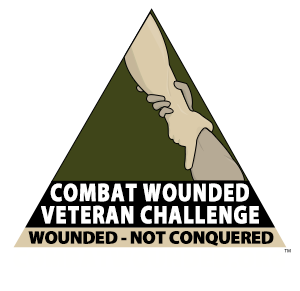Past Challenges
Kilimanjaro Challenge 2013
Summary of Objectives:
Prosthetics
The J.E. Hanger College of Orthotics and Prosthetics, St. Petersburg College in St. Petersburg, Florida, partnered with the Combat Wounded Veteran Challenge to provide clinical support for amputee climbers during their expedition. In addition to the clinical support Certified Prosthetist and Program Director Arlene Gillis provided, the school allowed O&P student Ted Graves to accompany the Combat Wounded Veterans to document his own case study. His case study followed each amputee’s reaction to the environmental stresses of Mount Kilimanjaro, specifically, residual limb fluctuation in traumatic amputees during periods of increased activity at high altitudes. The main objective of the prosthetic case study was to note ways to improve and expand prospects for amputee service members who wish to return to active duty, specifically focusing on controlling and adapting volume changes inside the prosthetic socket during extended periods of high activity.
We hypothesized that the changes and differences of the fluid inside the cells, also known as intracellular fluid, and the fluid outside of the cells, extracellular fluid, will be patterned according to the participant’s activity level.
Bioelectrical Impedance Analysis (BIA) Bioelectrical impedance analysis (BIA) measures the impedance or opposition to the flow of an electric current through the body fluids contained mainly in the lean and fat tissue. In practice, a small constant current is passed between electrodes spanning the body and the voltage drop between electrodes provides a measure of impedance. Using the Bioimpedance Analyzer (BIA) for a total body measurement consists of placing a total of four electrodes on the wrist and ankle and logging the data point in the BIA. The segmented body measurement consists of placing the four electrodes on the residual limb followed by the same process to log the data point in the BIA. The objective will be to correlate short-term physiologic changes with extracellular fluids volumetric changes and long-term physiologic changes with intracellular fluid’s volumetric changes. Bioimpedance measurements will be taken at key intervals throughout the day while logging environmental conditions to include, but not limited to: participant’s daily hydration, time of day, humidity, altitude, ambient temperature, and activity level.
Each data collection will consist of a total body composition measurement and a segmented body composition measurement of their residual limb. These two measurements allow us to log the total fluid in the participant’s body and track how much of that fluid is retained in their residual limb. The aim of this case study is to better understand how extreme environmental conditions affect socket fit, suspension, and its resulting adverse effects on the residual limb.
Traumatic Brain Injury
The first ever concentrated study at altitude concerning the effects of elevation, decreased atmospheric pressure and O2 Saturation on Traumatic Brain Injury was conducted and authored by Combat Wounded veteran SFC Michael Rodriguez during this expedition. SFC Rodriguez is an active duty United States Army Special Forces Green Beret with a history of multiple Traumatic Brain Injuries (TBIs) sustained from blast and blunt force. SFC Rodriguez still exhibits strong residual neurological symptoms from these events. SFC Rodriguez’s desired end-state is to document and find more effective ways to differentiate between altitude sickness diagnosis and progression versus residual TBI symptoms, ultimately learning how to prepare for and cope with these symptoms. His hope is that the data he collected will increase the survivability of service members operating in high altitude environments by delineating possible duty limitations for those with a history of TBI or even provide a safe means for an individual with neurological injuries or deficiencies to take on the challenges that increases in elevation can offer.
Post Traumatic Stress
Mr. Tom Barnhill, PTSD counselor, conducted in-field psychological research assessing veterans with PTSD demonstrating that a positively aimed team-based adventure activity, which challenges veterans both mentally and physically, best supports quality of life and a lasting reduction in PTSD symptoms.
Tom assembled a unique survey placing together validated scales, isolating some clinical dimensions of combat stress but also focusing on functioning in life. This allowed Tom to capture those without PTSD and to focus on quality of life gains while also noting clinical dimensions such as avoidance behaviors and depression. “It’s all relevant data for PTSD research”, he indicates, “specifically as well as for those without a formal diagnosis but with wounds from combat whether they be PTSD, amputations or TBI”. The results of Tom’s Case Study are forthcoming in six months after further post-event interviews.
Summary of Challenge:
On January 21, 2013, a group of 14 Combat Wounded and Injured military veterans and their support staff embarked on a courageous and inspirational expedition to summit the highest mountain on the African Continent, Mount Kilimanjaro. Their objective: to find medical solutions to further improve the science impacting the advancement of their prosthetics, Post Traumatic Stress (PTSD) and Traumatic Brain Injury (TBI) treatments. U.S. mountaineering guides who accompanied the Team included the founder of the Alaska Mountaineering School (AMS), Colby Coombs, and AMS senior guide Tim Hewette, both of whom are uniquely familiar with the members of the team, experienced and prepared to deal with the challenging conditions encountered by the veterans. Tanzanian mountaineering guides included Dawson, Thomas Meela, Danford, Hubert, Waziri and Roman. The expedition was the team’s second Explorers Club Expedition. Explorers Club Flag #93 was carried by the Kilimanjaro team. Flag 93 was first carried in 1939.
Expedition Journal:
